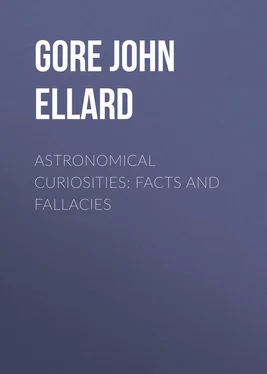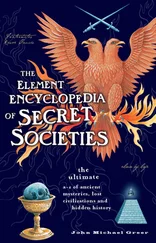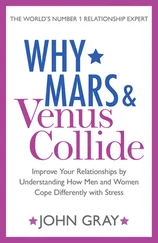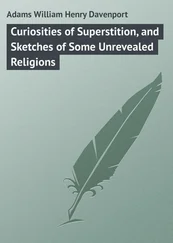John Gore - Astronomical Curiosities - Facts and Fallacies
Здесь есть возможность читать онлайн «John Gore - Astronomical Curiosities - Facts and Fallacies» — ознакомительный отрывок электронной книги совершенно бесплатно, а после прочтения отрывка купить полную версию. В некоторых случаях можно слушать аудио, скачать через торрент в формате fb2 и присутствует краткое содержание. Жанр: Физика, foreign_antique, foreign_prose, на английском языке. Описание произведения, (предисловие) а так же отзывы посетителей доступны на портале библиотеки ЛибКат.
- Название:Astronomical Curiosities: Facts and Fallacies
- Автор:
- Жанр:
- Год:неизвестен
- ISBN:нет данных
- Рейтинг книги:5 / 5. Голосов: 1
-
Избранное:Добавить в избранное
- Отзывы:
-
Ваша оценка:
- 100
- 1
- 2
- 3
- 4
- 5
Astronomical Curiosities: Facts and Fallacies: краткое содержание, описание и аннотация
Предлагаем к чтению аннотацию, описание, краткое содержание или предисловие (зависит от того, что написал сам автор книги «Astronomical Curiosities: Facts and Fallacies»). Если вы не нашли необходимую информацию о книге — напишите в комментариях, мы постараемся отыскать её.
Astronomical Curiosities: Facts and Fallacies — читать онлайн ознакомительный отрывок
Ниже представлен текст книги, разбитый по страницам. Система сохранения места последней прочитанной страницы, позволяет с удобством читать онлайн бесплатно книгу «Astronomical Curiosities: Facts and Fallacies», без необходимости каждый раз заново искать на чём Вы остановились. Поставьте закладку, и сможете в любой момент перейти на страницу, на которой закончили чтение.
Интервал:
Закладка:
J. Ellard Gore
Astronomical Curiosities: Facts and Fallacies
PREFACE
The curious facts, fallacies, and paradoxes contained in the following pages have been collected from various sources. Most of the information given will not, I think, be found in popular works on astronomy, and will, it is hoped, prove of interest to the general reader.
J. E. G.September, 1909.
CHAPTER I
The Sun
Some observations recently made by Prof. W. H. Pickering in Jamaica, make the value of sunlight 540,000 times that of moonlight. This makes the sun’s “stellar magnitude” minus 26·83, and that of moonlight minus 12·5. Prof. Pickering finds that the light of the full moon is equal to 100,000 stars of zero magnitude. He finds that the moon’s “albedo” is about 0·0909; or in other words, the moon reflects about one-tenth of the light which falls on it from the sun. He also finds that the light of the full moon is about twelve times the light of the half moon: a curious and rather unexpected result.
M. C. Fabry found that during the total eclipse of the sun on August 30, 1905, the light of the corona at a distance of five minutes of arc from the sun’s limit, and in the vicinity of the sun’s equator, was about 720 candle-power. Comparing this with the intrinsic light of the full moon (2600 candle-power) we have the ratio of 0·28 to 1. He finds that the light of the sun in the zenith, and at its mean distance from the earth, is 100,000 times greater than the light of a “decimal candle” placed at a distance of one metre from the eye. 1 1 Comptes Rendus , 1903, December 7.
He also finds that sunlight is equal to 60,000 million times the light of Vega. This would make the sun’s “stellar magnitude” minus 26·7, which does not differ much from Prof. Pickering’s result, given above, and is probably not far from the truth.
From experiments made in 1906 at Moscow, Prof. Ceraski found that the light of the sun’s limb is only 31·4 to 38·4 times brighter than the illumination of the earth’s atmosphere very near the limb. This is a very unexpected result; and considering the comparative faintness of the sun’s corona during a total eclipse, it is not surprising that all attempts to photograph it without an eclipse have hitherto failed. 2 2 Nature , April 11, 1907.
From Paschen’s investigations on the heat of the sun’s surface, he finds a result of 5961° (absolute), “assuming that the sun is a perfectly black body.” 3 3 Astrophysical Journal , vol. 19 (1904), p. 39.
Schuster finds that “There is a stratum near the sun’s surface having an average temperature of approximately 5500 °C., to which about 0·3 of the sun’s radiation is due. The remaining portion of the radiation has an intensity equal to that due to a black body having a temperature of about 6700 °C.” The above results agree fairly well with those found by the late Dr. W. E. Wilson. 4 4 Astrophysical Journal , vol. 21 (1905), p. 260.
The assumption of the sun being “a black body” seems a curious paradox; but the simple meaning of the statement is that the sun is assumed to act as a radiator as if it were a perfectly black body heated to the high temperature given above .
According to Prof. Langley, the sun’s photosphere is 5000 times brighter than the molten metal in a “Bessemer convertor.” 5 5 Knowledge , July, 1902, p. 132.
Observations of the sun even with small telescopes and protected by dark glasses are very dangerous to the eyesight. Galileo blinded himself in this way; Sir William Herschel lost one of his eyes; and some modern observers have also suffered. The present writer had a narrow escape from permanent injury while observing the transit of Venus, in 1874, in India, the dark screen before the eyepiece of a 3-inch telescope having blistered – that is, partially fused during the observation. Mr. Cooper, Markree Castle, Ireland, in observing the sun, used a “drum” of alum water and dark spectacles, and found this sufficient protection against the glare in using his large refracting telescope of 13·3-inches aperture.
Prof. Mitchell, of Columbia University (U.S.A.), finds that lines due to the recently discovered atmospherical gases argon and neon are present in the spectrum of the sun’s chromosphere. The evidence for the existence of krypton and xenon is, however, inconclusive. Prof. Mitchell suggests that these gases may possibly have reached the earth’s atmosphere from the sun. This would agree with the theory advanced by Arrhenius that “ionised particles are constantly being repulsed by the pressure of light, and thus journey from one sun to another.” 6 6 Nature , April 30, 1903.
Prof. Young in 1870, and Dr. Kreusler in June, 1904, observed the helium line D3 as a dark line “in the spectrum of the region about a sun-spot.” 7 7 Ibid. , May 18, 1905.
This famous line, from which helium was originally discovered in the sun, and by which it was long afterwards detected in terrestrial minerals, usually appears as a bright line in the spectrum of the solar chromosphere and “prominences.” It has also been seen dark by Mr. Buss in sun-spot regions. 8 8 Ibid. , May 18, 1905.
The discovery of sun-spots was claimed by Hariotte, in 1610, and by Galileo, Fabricius, and Scheiner, in 1611. The latter wrote 800 pages on them, and thought they were small planets revolving round the sun! This idea was also held by Tardè, who called them Astra Borbonia , and by C. Malapert, who termed them Sydera Austricea . But they seem to have been noticed by the ancients.
Although in modern times there has been no extraordinary development of sun-spots at the epoch of maximum, it is not altogether impossible that in former times these spots may have occasionally increased to such an extent, both in number and size, as to have perceptibly darkened the sun’s light. A more probable explanation of recorded sun-darkenings seems, however, to be the passing of a meteoric or nebulous cloud between the sun and the earth. A remarkable instance of sun-darkening recorded in Europe occurred on May 22, 1870, when the sun’s light was observed to be considerably reduced in a cloudless sky in the west of Ireland, by the late John Birmingham; at Greenwich on the 23rd; and on the same date, but at a later hour, in North-Eastern France – “a progressive manifestation,” Mr. Birmingham says, “that seems to accord well with the hypothesis of moving nebulous matter.” A similar phenomenon was observed in New England (U.S.A.), on September 6, 1881.
One of the largest spots ever seen on the sun was observed in June, 1843. It remained visible for seven or eight days. According to Schwabe – the discoverer of the sun-spot period – its diameter was 74,000 miles, so that its area was many times that of the earth’s surface. The most curious thing about this spot was that it appeared near a minimum of the sun-spot cycle! and was therefore rather an anomalous phenomenon. It was suggested by the late Daniel Kirkwood that this great spot was caused by the fall of meteoric matter into the sun; and that it had possibly some connection with the great comet of 1843, which approached the sun nearer than any other recorded comet, its distance from the sun at perihelion being about 65,000 miles, or less than one-third of the moon’s distance from the earth. This near approach of the comet to the sun occurred about three months before the appearance of the great sun-spot; and it seems probable that the spot was caused by the downfall of a large meteorite travelling in the wake of the comet. 9 9 Nature , June 29, 1871.
The connection between comets and meteors is well known.
Интервал:
Закладка:
Похожие книги на «Astronomical Curiosities: Facts and Fallacies»
Представляем Вашему вниманию похожие книги на «Astronomical Curiosities: Facts and Fallacies» списком для выбора. Мы отобрали схожую по названию и смыслу литературу в надежде предоставить читателям больше вариантов отыскать новые, интересные, ещё непрочитанные произведения.
Обсуждение, отзывы о книге «Astronomical Curiosities: Facts and Fallacies» и просто собственные мнения читателей. Оставьте ваши комментарии, напишите, что Вы думаете о произведении, его смысле или главных героях. Укажите что конкретно понравилось, а что нет, и почему Вы так считаете.











